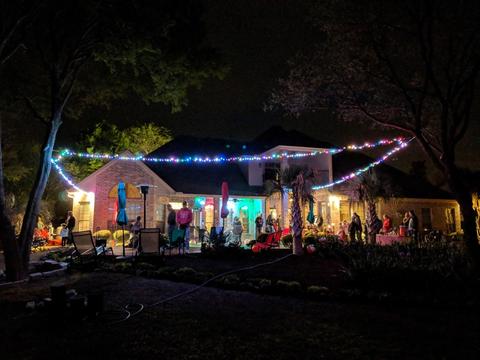Now is the time to brush up on some safety tips to ensure your pool area is a secure, fun environment for your family and friends to enjoy.
It all starts by understanding the potential risks and dangers that could arise in or around the pool area – and then taking steps to mitigate those risks.
Install a Safety-Compliant Pool Fence
It is a homeowner’s responsibility to be fully-aware of your local regulations which are designed to ensure safety around every pool and spa in the state. Adhering to these regulations will help to prevent accidents and hefty fines.
By installing a safety-compliant barrier, the risk of drowning-related accidents can be heavily reduced. Not only will the fence act as a barrier, but the self-closing gate is a further safety barrier.
It is therefore important to do your homework and engage a reputable fencing company who advocate and adhere to your local requirements and regulations.
While they are an important safety measure, pool fences can also be aesthetically pleasing and enhance the design your back yard.
Fence makers have a range of durable fencing options for pool areas, including glass pool fencing, slat fencing, aluminum tubular fencing and Smartwood fencing.
And because fencing is custom-made, designers can create the exact style you’re looking for.
Supervise, Supervise, Supervise!
Supervision is key to a safe swimming environment; never leave a child alone around water. Always watch children in your care, whether they are in the actual swimming pool, or just within the vicinity.
If you have friends or family with kids, make sure that the parents are watching their children, or there is a designated adult on pool duty.
You must remain vigilant about monitoring children in and around the pool, at all times. It’s also important to stay within arm’s reach of babies, toddlers and beginner swimmers.
Enforce Pool Safety Rules
Safety should be the top priority for everyone in or around the pool area. Safety rules should be clearly explained and enforced, at all times. If you have guests, check with them to ensure they’re full across the rules – and their responsibilities.
Educating your children on the possible dangers of drowning and hazards around the pool is also vital. Children should be taught to never enter the pool area alone or without an adult; to not run around the pool; to not push others into the pool; to not dive into the shallow end and to never play near the pool drains, jets or control area. Also, non-swimmers should be kitted out with a personal floatation device, or lifejacket, while beginner swimmers should always wear rubber rings or arm bands when in the pool area.
Get Swimming Lessons

Teaching your child to float, treat water and swim is not only a good safety practice, but it is also excellent for their personal development – and your peace of mind.
The earlier your child learns to swim, the better.
Install a Safety Alarm
Install a pool alarm, which is an in-water motion detector that sounds when activity is detected.
You can also install a gate alarm which will notify you should anyone enter the pool area.
Install Self-Closing Doors
Installing self-closing external doors around your home will prevent children from wondering out of the house and into the pool area.
Also, ensuring the door handles are high up, out of reach, will prevent children from letting themselves out of the home.
Regular Pool Area Inspection
Homeowners should frequently inspect the pool area for potential dangers.
Ensure that all drain covers are secure and have no cracks, as well as being compliant. Non-compliant or poorly maintained drains can create suction under the water which can lead to drowning.
Pool chemicals should be securely stored out of reach of children, preferably locked away. Chemicals can be harmful when ingested or inhaled, so any chemical spills should be cleaned up immediately.
Also, inspect the pool area for any slip or trip hazards.



